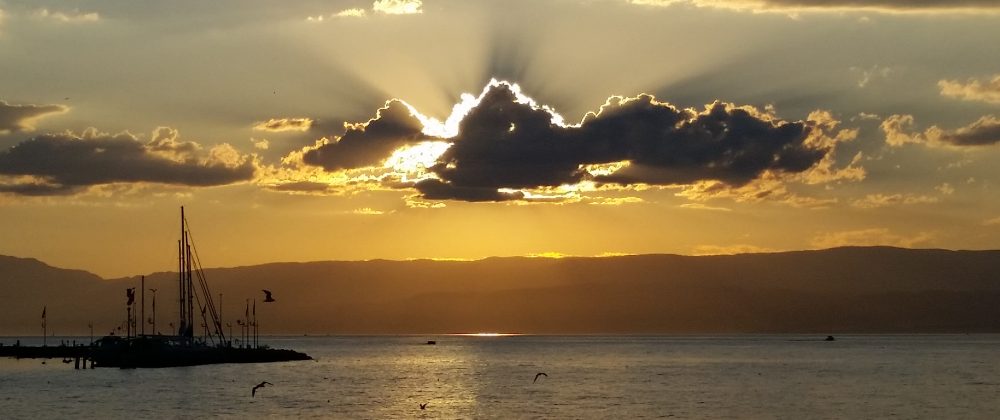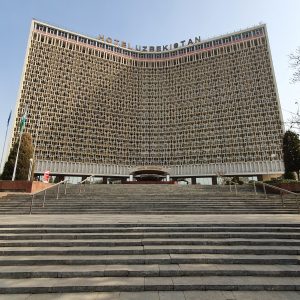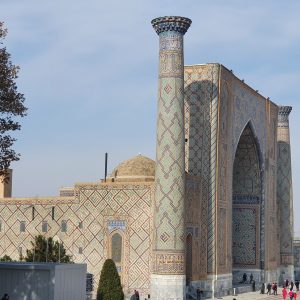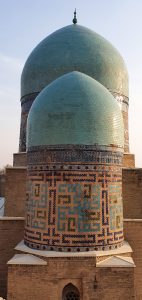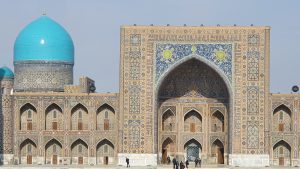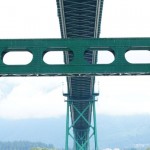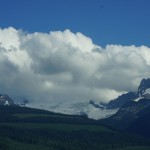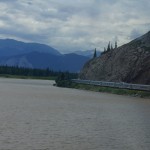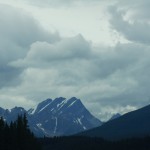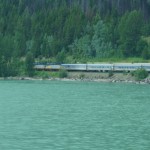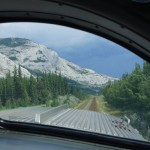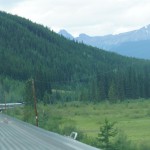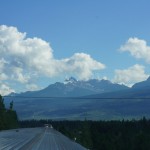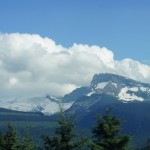To paraphrase Tolstoy (who wouldn't?), “all great movie lines are alike; each terrible line is bad in its own way.” There are, in my my movie memory, five lines that outdo all others in the awfulness of delivery and content; each is uniquely bad, such as to belong to its own class; there need to be seminars to study just how the mind of man (or woman) could come up with such horrors, and how the mouth of man (or woman) could utter them. Entire brigades of psychologists should be unleashed upon the world to study why it is that we, the watchers and movie-goers, sit there passively and do not react when assaulted – nay, battered – with these insults to the English language, the art of acting and the craft of movie-making. These five worst lines are, in no particular order (points for naming the movie; bonus points for naming the actor; gift certificate for a therapist near you if you name the writer/director):
35. “It's raining? I didn't notice.”
d) “Love means never having to say you're sorry.”
MCML: “Hoo-Ha.”
** “I'm Connor McLeod, of the clan McLeod, of Planet Zeist.”
H: “Then it begins.”
(Confused by the numbering? I told you, “in no particular order”.)
Of these, one in particular stands out: not just because it was atrocious, but because it was gratuitously so; and not just because it destroyed a movie, but because it laid waste to a concept.
The Highlander was an odd gem of a movie. Christopher Lambert – a Frenchman playing a Highland Scot with a bizarre accent – belonged, in the movie/concept, to a race of Immortals who were given the promise of Reaching the Great Mystery of the Universe (and thereby Becoming at One with the Great Mother Earth and All Animals in the Kingdom of Nature) if they could behead every other immortal and remain the last one standing. The concept was hokey, to be blunt, and the storyline had more holes in it than a Scottish Golf Course beset by a battalion of moles. But here was something endearing, and highly entertaining, in the innocence and earnestness with which the movie tackled the Grand Themes of Life. Then the sequel came out, almost literally from another planet, and ruined the whole thing.
Almost the whole thing, for there was one thing that the second movie, the one from planet Zeist, could not undo, and it was the scenery of the original. The Scottish Highlands. Whether or not the movie was actually filmed there was immaterial; once I saw the movie, the damage was done. I fell in love with Scotland – an image of Scotland – and the Highlands, and it took me well-nigh two decades to finally make it there in person. And to fall in love again, this time not with an image but with the real thing.
Edinburgh
We landed in Edinburgh Airport in mid-morning (sunny) one early August day. Got the car and drove for an hour to Rosslyn Chapel, one of the architectural gems of Scotland. Upon arrival at the Chapel (driving rain and howling wind) you notice how small it is. This is not a Gothic monster like the Köln Cathedral and there is no pretense that you are going to be overwhelmed by the sheer size of the thing. Like a nouvelle cuisine dish in a snooty French restaurant, Rosslyn Chapel is a little delicacy to be savoured rather than an all-you-can-eat monster to be gulped down. Practically the entire interior is carved; one column alone took an apprentice master mason three years to complete (while the mason was away looking for a piece of granite or other stone for the same column; when the mason came back, he was not terribly happy that the work had already been done …). A masterpiece and a must see (the column, certainly; and the Chapel as a whole). An hour later we walked out (sunny with cloudy periods) and lunched at the village. After lunch (driving rain) we got into the car and drove to Edinburgh.
Edinburgh, in my view, is one of the loveliest cities in Europe; the Royal Mile is the prettiest street in all of Britain, and probably one of the prettiest Miles in all of Europe. The buildings are not grand or especially old; but there is a harmony in the place that is at once impressive and comforting. Our first destination after Rosslyn was Edinburgh Castle. (Sunny again; getting whiplash from the constant change in the weather.) From below, the Castle, perched as it is on a rock in the middle of the city, looked mighty imposing. You half expect a labyrinth of dungeons and dank walls when you get there. Dungeons there certainly were, at some point; and some of the walls were kind of grimy. But I found the Castle itself (not terribly old, by European Castle Standards – there is an EU Commission Regulation that forbids a castle to be called “old” if it was built after 1453 – the official end of the Middle Ages – but the Brits got an exemption. Anything built before the Blair Era is now considered “old”, to contrast with Blair's Cool Britannia.) quite charming. Then again, perhaps it is the romantic in me: “Here is where Lord Darnley, the husband of Mary Queen of Scots, dragged her Italian tutor out of the chambers of the Queen and had him stabbed 53 times.” “This is where Lord Darnley was arrested by the Scots Lords and committed to the scaffold for treason.” “This is where Mary Queen of Scots last saw her one year-old son, before he was taken from her, and she was handed by the Scottish nobles to the English to be beheaded.” And so on. Such delicious tragedy.
Dinner was something of a challenge. We had heard much about the Scottish culinary experience – deep fried Mars bars and all – and then there was the fact that we were in Edinburgh in the middle of the Fringe Festival. Between the tourists, the (then) low Canadian dollar and the deep-fried pizza, we risked not just the wallet but the functioning of our arteries. So we set out to look for restaurants off the beaten path. Past “The Cock and the Spigot”, we stumbled upon “The Broken Bone”, a vegetarian nouvelle cuisine place (“Asparagus and Pistachio Quiche”, “Puff Pastry with Grapes and Peanut-Butter”). I am not especially lacking in culinary courage – anyone who has had Belgian Eel in Green Sauce or Sweet and Sour Duck Tongues is certainly one for food experiments – but my courage failed at mention of “Coriander Tofu”, and we moved on to the next restaurant (“The Diddling Dick” or “The Crack and the Skull”, I forget), where we had an overpriced but reasonably edible dinner.
Oban and environs
After two days in Edinburgh we set out to explore. The first two days we were planning a literary tour of Scotland. Our first stop was Loch Lomond.
Yes, indeed, the Loch Lomond.
Our second stop – what's that? You can't place the literary significance of Loch Lomond? Exasperated sigh, roll of the eyes … You do realise that you are the only one on this list who does not know the enormous literary significance of Loch Lomond. Because of a single, solitary reader, I have to break the flow of my email and explain it all. Well, not all; at least some. I ask the other readers to excuse you.
Loch Lomond, to make a long story short, is the favourite Scotch of Captain Haddock.
So where were we? Yeah, my lit-
What, you don't know who Captain Paddock, er, Herring, er, Haddock is? And I suppose next you tell me that you have no idea where Marlinspike Hall is, or who is the world-renowned Professor Cuthbert Calculus? The Milanese Nightingale? Dupont? Or, to be precise, Dupond?
(My apologies to the rest, but there is this one reader who is, evidently, out to lunch …. So here it goes.)
Some say that the most significant Belgian export is chocolate; others might mention rank corruption; one or two would suggest EU regulations and other red tape. But of course, all of that pales in comparison to the Graphic Novel, and more specifically, Tintin. Written by a cryptofascist anti-Semite and evincing, on occasion, a rude racism, the Tintin chronicles nevertheless demonstrated a remarkable eye for social and political commentary. There was, of course, quite a lot of fluff (“The Black Island”, which takes place in Scotland, was on its face about counterfeit operations, but it was really about a gorilla in a castle), but many of the books dealt with real problems: The Blue Lotus addressed Japan's invasion of China on trumped-up charges (when no one in the West was willing to talk about it); Tintin in the Land of the Soviets exposed Stalinism even as such luminaries as Jean-Paul Sartre were still singing the praises of the Soviet regime; in Tintin in America there is a clear condemnation of the treatment of Native Americans, and so on. Besides, Hergé, the author, spun a good yarn. And that's why Loch Lomond, the captain's whiskey, stayed with me all these year, not to mention the Scottish castle where the gorilla lived (long story).
So … back to the literary tour of Scotland, and Loch Lomond. Lovely loch (it was sunny); great vistas; beautiful area. From there, we went to Inverary Castle (clouding over), the home of the Duke of Argyll. The Duke is a dashing fellow; his house looks great on the outside. Inside, it had a musty smell, frayed 17th c. furniture and tapestry, and some stuff belonging to Rob Roy (an outlaw by English standards, he was a Scottish hero). The castle looks a lot older than it is; and looks a lot better from the outside than inside. From there, off to a bed and breakfast in the outskirts of Oban, of whiskey fame. Angus on the hoof were grazing outside the window; sheep stopped and stared as we walked past the pastures (by this point, in driving rain); dinner was excellent; breakfast the next day, as the official Guide to Scotland reassured us, was “highly original, reflecting the character and the culture of the owners.” In the case of this B&B, the owners were from Birmingham, so we got bangers and mash.
Our fourth day was spent mostly on the road; we were to complete the literary tour with a visit to the castle that had inspired the castle in The Black Island and with an attempt to find the Harry Potter bridge and steamtrain. The Harry Potter bridge – better known as the Glenfinnian Viaduct – is hidden in a valley behind the Glenfinnian Monument. There is really no sign to tell you how to find the place. Entirely by chance, we stopped at the monument after a drive in Scottish back country (sunny); we stopped at the monument for coffee (rain) and decided to walk up the vantage point (in mud, slipping and sliding up the hill) to get a better look at the loch (driving rain and sleet). Mission Accomplished, we headed back to the car to continue the journey (the clouds had passed by now and the sun had returned).
The Hebrides and the Highlands
The road ended, literally, in Mallaig, where (under a massive rainpour) we saw the Harry Potter train and caught the ferry over to the Isle of Skye.
I had first read about the Inner Hebrides in two small books setting out the account of Samuel Johnson's journey to the Highlands and the Scottish Isles (there is Johnson's version, and also Boswell's immensely more entertaining retelling). There is a lot of romance attached to the Hebrides in Scottish lore, especially to Skye, because this is where Bonnie Prince Charles, the pretender to the English and Scottish thrones, was spirited to in maid's clothing by Flora Macdonald after his ignominious defeat at the Battle of Culloden Hill. This was the last Jacobite attempt to reclaim the British throne from the Hanoverians, installed in London since 1714 by Britain's Protestant elite. By all accounts, Charles was a brave man, though much like his father and grandfather, thoroughly misled, both about the times and about his own support in the British heartland. The pages of history are filled with such characters and at each retelling, especially from a distance, the “romance” of their doomed projects becomes that much more appealing. As we drove on a single track road in the desolate wilds of Skye, the thought that came to my mind was this: what foolishness to leave Rome, to come to this barren island, to hide in flea-infested beds for months, to run from Royal agents and “traitorous” subjects in a maid's outfit … and for what?
Johnson was an admirer of the Stuarts, more out of conservative attachment to tradition than any liking for the mad line of Mary Queen of Scots (she's always in the background; her grandson, like her, lost his head to ambition; her great-grandson was deposed, and his son, the Bonnie Prince, demonstrated the same bad judgement as Mary. Ran in the family, I guess.). The problem of history, and of modern times, is that there are always Bonnie Prince Charleses around, rising for one lost cause or another; in their mad pursuit of madder ambition, these characters emit a sort of romantic radiance; some, like Johnson, regard, admire and dismiss; others, however, follow, and therein lies the danger.
From Skye we pressed on to the Highlands, where we were to spend two wonderful days. The first day we went to Applecross along the coastal “scenic” route. Or the coastal “suicide” route. Single-track road; mountainous terrain; no guardrails along the road; sheep dozing on the warm asphalt; Dutch and German extra-wide caravans barrelling down at Autobahn speeds towards you; hills and peaks and gullies and streams rising and falling from every direction; rain and sleet and fog and blinding sun in random succession … In Applecross we walked through a “Spruce Forest”, which was more of a clear-cut because of a storm-and-regeneration plan (storms cleared the place of trees that had not been native to the country; the local authorities allow local flora to return but keep foreign trees out); all along the pathway there were chives and wild mint and thistle and wasps – I might as well have stayed in my garden, except of course that I would have missed the clear-cut and the sheep droppings. We had lunch at a charming little restaurant called The Potting Shed; you eat pretty much whatever it is that they grow in the garden (even the bread is made of rye grown on the grounds), so it gives you a healthy, virtuous feeling, which you need after you part with £9 for lettuce and goat cheese salad. On the way back, we drove through a massive bowl on a single-track switch-back … the views were stunning – not that I was paying attention, as keeping my eyes (and the car's wheels) on the road required all my attention and nerves.
On the second day in the Highlands we went north, to Loch Maree, a favourite of Queen Victoria's (for what it's worth) and one of the most spectacular vistas we saw in a land of spectacular vistas. As I write this, I am conscious of the fact that the superlatives tend to tumble one on top of the other and thus lose their force. At the same time, I wish to underline the context from which I had gone to explore the Highlands, and I want you to see the superlatives in that light. Switzerland, after all, and Geneva in particular, is all about lakes, mountains, spectacular views and relatively unspoiled nature. Evidently, the Swiss country is not as wild or barren as the Highlands, but leaving that aside, in principle, the sight of lakes and mountains and winding roads and valleys was not one with which I was unfamiliar. And yet. And yet, Loch Maree was captivating.
We were in Scotland, in the Highlands, and it stands to reason that we should visit Loch Ness. From Shieldagh, we drove on to Inverness, which is at the Northern tip of the famous loch. Inverness is aggressively ugly – you have to question the sanity of a city council that would allow three massive concrete blocks to block the view of the charming Inverness Castle from the firth (river outlet into the sea). And you have to really wonder about the Scottish Tourist Board's mental stability when you see their promotional posters plastered all over the concrete buildings: there is an “artist's rendition” of a thistle, with the motto: “Live it. Travel Scotland.” Live “it”? What's “it” exactly? A thistle? Live the life of a prickly purple pest? Travel Scotland like a weed? The dangers of dangling pronouns, of meaningless mottoes, of bad planning.
Stirling Castle
After lunch we headed to Loch Ness; it was foggy and after a cursory attempt at seeing the monster, we gave up and went to a Scotch distillery instead. At Dalwhinnie. Twinned with Las Vegas. The village, not the distillery, though for all practical purposes they were the same … Any way, obligatory tour of a distillery over (and not a Scotch fan and don't even want to “acquire” the taste), we pressed on to Stirlingshire, where we were to spend the next two days.
The drive through the interior took nearly the whole day. It was raining, and when the rain stopped, the fog would descend. Gray skies, gray road, no visibility, endless talk radio in Gaelic – even Simon the GPS had fallen silent because of the monotonous road – and the mind of the driver begins to wander. In my specific case, under the circumstances, you begin to notice road signs – and in Britain, these are remarkable indeed. This is a Nanny State run amok; a nation in permanent state of toilet training. Every fifty meters or so there is a sign instructing you to do something, to refrain from doing something, or to pay attention to one thing or another. And we are not talking about “keep right” or “look left”, but signs that tell you, for example, “Don't cause frustration; give way to faster cars” – I'm not kidding about this one.
And then there are the cameras. Every nook and cranny of the country has a closed-circuit camera watching over you – or, at any rate, watching you. For me at least, the constant surveillance was a permanent invitation to petty mischief: you are almost driven to pick your nose in front of the camera, or scratch your balls – zippers open – every time you walk into an elevator. And you think of ways of being more aggressive without inviting the police to do a cavity search. What if the cc cameras had sound recording capability? Why, that would almost demand letting rip a loud fart or a belch; let them install smell-detectors, and I'd be eating beans by the cartload to oblige.
While I'm in full rant mode, let me remark on that other famous British custom: the fact that they do not charge for their museums. It is true, of course, but utterly irrelevant when you are a tourist. For, to enter any other tourist tra- I mean, attraction, you are required to pay an arm and a leg, and a liver, and a few feet of your small intestines, for the privilege. If there is a ruin in the country, there is a stand to drain blood from tourists.
Doune Castle is one example. Famous principally for housing the first Duke of Albany (who?) and being one of the sites for Monty Python and the Holy Grail (now you're talking), the castle consists of three rooms, a turret and a scrubbed kitchen; you can't even walk on top of the walls. And for the pleasure of seeing where John Cleese and Eric Idle traipsed around in drag, you pay £4 a head. Stirling Castle was more imposing – at £12 it better have been, though the staff was decidedly grumpier than any other place we had been to in Scotland. As for the Castle itself – well, there is a lot of history to the place, which was undergoing extensive renovations. Apparently, in the course of ripping open the innards of the Castle, the workers had come across some interesting oddities. Evidently helped by a team of spinners and communication experts, the Museum Board was trying to get as much mileage out of the construction and these oddities as possible. My favourite: “Mysteries of the Palace”. One whole series of posters was on how one of the beams in the roof is at a 45 degree angle and it is not clear how the roof was attached to it. (Collectively after me: “Ooooh, aaaaah.”) Another series of posters explored the deep mysteries of a door that may have led to a staircase in the garden. (“Just use your imagination”, the guide helpfully added.) I tried,oh I tried, but with the floors covered in plywood and the ceiling ripped open, with inane signs telling me about the mysteries hidden in the angle of the support beams, and with the guide exhorting me to exercise my imagination about a door that may or not have led to a garden, it was hard going. I just was not sure exactly why I had paid twelve quid to visit a construction site to “use my imagination”. If you are planning on visiting Stirling, make sure the flooring is done. Or wait for the movie.
After that, we had one more day and night in Edinburgh. And then back to Geneva for two more days, before the definitive end of my posting.
For the time being, you should not expect any more travelogues. I have one trip planned to New York – a weekend thingy – and a ski trip back to Switzerland. Not terribly exciting. Next summer … who knows? In the meantime, keep warm, and keep looking at the stars.
